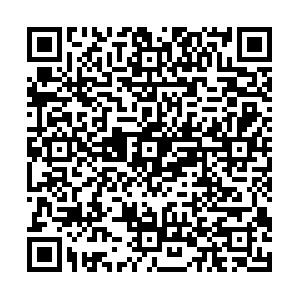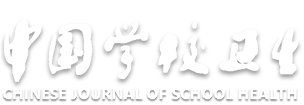Drinking water knowledge, attitudes and practices among primary school students in rural areas of China
-
摘要:
目的 了解中国农村地区小学生饮水相关知识、态度和行为现状,为开展饮水健康干预措施提供科学依据。 方法 2023年11—12月,采用分层整群随机抽样方法在山西、浙江、江西、广西和甘肃5地抽取6 354名四至六年级小学生进行问卷调查。采用统一设计的调查问卷(包含基本信息、饮水相关知识、态度和行为指标),由学生自行填写。采用χ2检验分析不同性别、是否住校学生的饮水相关指标差异,Logistic回归分析学生饮水行为的影响因素。 结果 在饮水知识指标中,学生对自身年龄段日适宜饮水量的知晓率最低(27.90%),走读生知晓率高于住校生(31.29%,15.49%,χ2=132.75,P < 0.01)。关于饮水态度,13.33%的学生认为井水或自来水可以直接饮用,9.58%的学生认为在学校上厕所很麻烦。学生自述每天饮水量为1 000(600,1 200)mL。多因素Logistic回归结果表明,较高年级(OR=1.60,95%CI=1.34~1.92)、走读生(OR=1.32,95%CI=1.15~1.52)、北方地区(OR=1.43,95%CI=1.27~1.61)、知晓日适宜饮水量(OR=1.41,95%CI=1.24~1.60)、饮水温度(OR=1.43,95%CI=1.28~1.60)、科学补水方式(OR=1.25,95%CI=1.08~1.44),以及平时采取科学的补水方式(OR=1.75,95%CI=1.50~2.04)是日饮水量达标的独立影响因素(P值均 < 0.05)。 结论 农村地区小学生缺乏健康饮水等方面的知识,对安全饮水存在认知偏差,表现出饮水量不足等不良饮水行为。建议结合学生特点开展健康教育,提升饮水素养。 -
关键词:
- 饮水 /
- 健康知识,态度,实践 /
- 回归分析 /
- 学生 /
- 农村人口
Abstract:Objective To investigate the current status of knowledge, attitudes and practices regarding drinking water among primary school students in rural areas of China, so as to provide scientific basis for implementing health interventions related to drinking water. Methods From November to December 2023, a stratified cluster random sampling method was employed to select 6 354 fourth to sixth grade primary school students in Shanxi, Zhejiang, Jiangxi, Guangxi and Gansu for a questionnaire survey. A uniformly designed questionnaire (including basic information, drinking water-related knowledge, attitudes and practices indicators) was distributed and completed by the students themselves. The χ2 test was used to analyze the differences in drinking water-related indicators among students of different gender and boarder, and Logistic regression was used to analyze the influencing factors of drinking water practices among students. Results Among the indicators of drinking water knowledge, the awareness rate of appropriate daily water intake for respective student age groups was the lowest (27.90%). The awareness rate among nonresident students was significantly higher than that among boarding students (31.29%, 15.49%, χ2=132.75, P < 0.01). Regarding attitudes toward drinking water, 13.33% of the students believed that well water or tap water could be drunk directly, and 9.58% believed that going to the toilet at school was troublesome. Regarding practices, the self-reported water intake among students was 1 000 (600, 1 200) mL. The results of multifactorial Logistic regression showed that higher grades (OR=1.60, 95%CI=1.34-1.92), nonresident students (OR=1.32, 95%CI=1.15-1.52), northern region (OR=1.43, 95%CI=1.27-1.61), knowledge of appropriate daily water intake (OR=1.41, 95%CI=1.24-1.60), drinking temperature (OR=1.43, 95%CI=1.28-1.60), scientific hydration methods (OR=1.25, 95%CI=1.08-1.44), and adopting scientific hydration methods regularly (OR=1.75, 95%CI=1.50-2.04) were the independent influences on daily water intake attainment (P < 0.05). Conclusions Rural primary school students lack knowledge about healthy drinking water, have cognitive biases about safe drinking water and exhibit unhealthy drinking behavior. It is suggested that health education be carried out in combination with the characteristics of students to enhance their drinking water literacy. -
Key words:
- Drinking /
- Health knowledge, attitudes, practice /
- Regression analysis /
- Students /
- Rural population
1) 利益冲突声明 所有作者声明无利益冲突。 -
表 1 饮水知识知晓率在不同性别和住校情况学生间比较
Table 1. Awareness rates of drinking water knowledge among students of different genders and on-campus living situation
知识 性别 是否住校 男生(n=3 264) 女生(n=3 090) χ2值 P值 住校生(n=1 362) 走读生(n=4 992) χ2值 P值 自身年龄段日适宜饮水量 989(30.30) 784(25.37) 19.16 < 0.01 211(15.49) 1 562(31.29) 132.75 < 0.01 适宜饮水温度为10~40 ℃ 1 636(50.12) 1 466(47.44) 4.56 0.03 462(33.92) 2 640(52.88) 154.01 < 0.01 科学的补水行为是少量多次、足量饮水 2 415(73.99) 2 557(82.75) 71.60 < 0.01 1 029(75.55) 3 943(78.99) 7.42 0.01 应该少喝或不喝含糖饮料 2 096(64.22) 2 154(69.71) 21.62 < 0.01 861(63.22) 3 389(67.89) 10.55 < 0.01 经常喝含糖饮料可能会导致龋齿 2 762(84.62) 2 722(88.09) 16.18 < 0.01 1 102(80.91) 4 382(87.78) 42.74 < 0.01 经常喝含糖饮料可能会导致肥胖 2 666(81.68) 2 696(87.25) 37.38 < 0.01 1 040(76.36) 4 322(86.58) 84.84 < 0.01 注:()内数字为知晓率/%。 表 2 饮水态度持有率在不同性别和住校情况学生间比较
Table 2. Comparison of holding rates of attitudes to drinking water among students of different genders and on-campus living situation
态度 性别 是否住校 男生(n=3 264) 女生(n=3 090) χ2值 P值 住校生(n=1 362) 走读生(n=4 992) χ2值 P值 饮水对个人身体健康很重要 2 823(86.49) 2 758(89.26) 11.37 < 0.01 1 189(87.30) 4 392(87.98) 0.47 0.50 不渴就没必要喝水 377(11.55) 227(7.35) 32.61 < 0.01 161(11.82) 443(8.87) 10.80 < 0.01 可以直接饮用井水或自来水 467(14.31) 380(12.30) 5.55 0.02 222(16.30) 625(12.52) 13.23 < 0.01 从家带水去学校很麻烦 481(14.74) 369(11.94) 10.70 < 0.01 311(22.83) 539(10.80) 133.79 < 0.01 在学校去厕所很麻烦 354(10.85) 255(8.25) 12.32 < 0.01 178(13.07) 431(8.63) 24.29 < 0.01 在校学习紧张、没有时间喝水 409(12.53) 327(10.58) 5.88 0.02 241(17.69) 495(9.92) 63.22 < 0.01 老师经常提醒我喝水 2 097(64.25) 1 941(62.82) 1.40 0.24 881(64.68) 3 157(63.24) 0.96 0.33 家长经常提醒我喝水 2 391(73.25) 2 272(73.53) 0.06 0.80 1 040(76.36) 3 623(72.58) 7.84 < 0.01 注:()内数字为持有率/%。 表 3 饮水行为形成率在不同性别和住校情况学生间比较
Table 3. Comparison of formation rates of drinking water behaviors among students of different genders and on-campus living situation
行为 性别 是否住校 男生(n=3 264) 女生(n=3 090) χ2值 P值 住校生(n=1 362) 走读生(n=4 992) χ2值 P值 最常饮用的饮品 白水 2 186(66.97) 2 096(67.83) 0.53 0.47 822(60.35) 3 460(69.31) 39.08 < 0.01 其他(饮料、奶类等) 1 078(33.03) 994(32.17) 540(39.65) 1 532(30.69) 平常的饮水习惯 少量多次、足量饮水 2 239(68.60) 2 362(76.44) 48.88 < 0.01 929(68.21) 3 672(73.56) 15.33 < 0.01 其他(口渴才喝、集中大量喝) 1 025(31.40) 728(23.56) 433(31.79) 1 320(26.44) 喝生水的频率 经常 769(23.56) 573(18.54) 28.86 < 0.01 325(23.86) 1 017(20.37) 35.13 < 0.01 偶尔 919(28.16) 852(27.57) 439(32.23) 1 332(26.68) 从不 1 576(48.28) 1 665(53.88) 598(43.91) 2 643(52.94) 进餐时大量饮水频率 经常 1 039(31.83) 873(28.25) 25.51 < 0.01 458(33.63) 1 454(29.13) 11.03 < 0.01 偶尔 1 594(48.84) 1 704(55.15) 661(48.53) 2 637(52.82) 从不 631(19.33) 513(16.60) 243(17.84) 901(18.05) 喝含糖饮料的频率 经常 904(27.70) 618(20.00) 51.64 < 0.01 381(27.97) 1 141(22.86) 15.38 < 0.01 偶尔 1 671(51.19) 1 745(56.47) 693(50.88) 2 723(54.55) 从不 689(21.11) 727(23.53) 288(21.15) 1 128(22.60) 注:白水指自来水、经过滤净化处理后的直饮水、经煮沸的白水、桶装水以及包装饮用纯净水、天然矿泉水、天然泉水等各种类型饮用水;喝生水的频率、进餐时大量饮水频率、喝含糖饮料的频率,经常指每周2次及以上,偶尔指每月1~4次。()内数字为形成率/%。 表 4 农村地区小学生自述饮水量Logistic回归分析(n=6 354)
Table 4. Logistic regression analysis of self-reported water consumption among primary school students in rural areas(n=6 354)
自变量 选项 β值 标准误 Wald χ2值 OR值(95%CI) P值 地区 北方 0.18 0.03 35.31 1.43(1.27~1.61) < 0.01 是否住校 走读生 0.14 0.04 14.85 1.32(1.15~1.52) < 0.01 年级 五 0.17 0.04 16.20 1.60(1.34~1.92) < 0.01 六 0.12 0.06 4.28 1.53(1.21~1.92) 0.04 是否知晓日适宜饮水量 是 0.17 0.03 28.50 1.41(1.24~1.60) < 0.01 是否知晓适宜饮水温度 是 0.18 0.03 37.76 1.43(1.28~1.60) < 0.01 是否知晓科学的补水方式 是 0.11 0.04 9.22 1.25(1.08~1.44) < 0.01 平常的饮水习惯 集中大量喝 0.19 0.07 7.20 1.75(1.39~2.21) < 0.01 少量多次,足量饮水 0.19 0.05 15.10 1.75(1.50~2.04) < 0.01 -
[1] ZHANG J, ZHANG N, HE H, et al. Different amounts of water supplementation improved cognitive performance and mood among young adults after 12 h water restriction in Baoding, China: a randomized controlled trial (RCT)[J]. Int J Environ Res Public Health, 2020, 17(21): E7792. doi: 10.3390/ijerph17217792 [2] CHOURAQUI J P. Children's water intake and hydration: a public health issue[J]. Nutr Rev, 2023, 81(5): 610-624. doi: 10.1093/nutrit/nuac073 [3] 赵丽云, 丁钢强, 赵文华. 2015—2017年中国居民营养与健康状况监测报告[M]. 北京: 人民卫生出版社, 2022.ZHAOL Y, DING G Q, ZHAO W H. Monitoring report on nutrition and health status of Chinese residents, 2015-2017[M]. Beijing: People's Medical Publishing House, 2022. (in Chinese) [4] 林国天, 程秋云, 张帆, 等. 饮水与儿童肥胖的定性循证研究[J]. 中国儿童保健杂志, 2023, 31(1): 76-80.LIN G T, CHENG Q Y, ZHANG F, et al. Qualitative evidence-based study of the association between drinking water and childhood obesity[J]. Chin J Child Health Care, 2023, 31(1): 76-80. (in Chinese) [5] 夏露露, 杨文利, 栗达, 等. 学龄期肥胖儿童夏季饮水量及水合状态分析[J]. 中国儿童保健杂志, 2020, 28(10): 1140-1143.XIA L L, YANG W L, LI D, et al. Analysis of water consumption and hydration status of school-age obese children in summer[J]. Chin J Child Health Care, 2020, 28(10): 1140-1143. (in Chinese) [6] 何海蓉, 张娜, 蔡豪, 等. 北京市9城区中小学生饮水知识、态度和行为调查[J]. 中国健康教育, 2019, 35(3): 216-220.HE H R, ZHANG N, CAI H, et al. Investigation on knowledge, attitudes and practices of drinking water among primary and middle school students in 9 districts of Beijing[J]. Chin J Health Educ, 2019, 35(3): 216-220. (in Chinese) [7] 陈聪. 上海市金山区中小学生饮水健康知识态度行为调查[J]. 中国学校卫生, 2018, 39(5): 770-772. doi: 10.16835/j.cnki.1000-9817.2018.05.038CHEN C. Investigation on the knowledge, attitudes and behaviors regarding drinking water health among primary and secondary school students in Jinshan District, Shanghai[J]. Chin J Sch Health, 2018, 39(5): 770-772. (in Chinese) doi: 10.16835/j.cnki.1000-9817.2018.05.038 [8] 程帅, 焦利静, 夏云婷, 等. 广西某地农村小学生水合状态及饮水知信行现状[J]. 中国学校卫生, 2023, 44(10): 1478-1482. doi: 10.16835/j.cnki.1000-9817.2023.10.009CHENG S, JIAO L J, XIA Y T, et al. Hydration status and knowledge, attitude and behavior regarding hydration among primary school students in a rural area of Guangxi[J]. Chin J Sch Health, 2023, 44(10): 1478-1482. (in Chinese) doi: 10.16835/j.cnki.1000-9817.2023.10.009 [9] 中国营养学会. 中国居民膳食指南(2022)[M]. 北京: 人民卫生出版社, 2022.Chinese Nutrition Society. Dietary Guidelines for Chinese Residents (2022)[M]. Beijing: People's Medical Publishing House, 2022. (in Chinese) [10] SWIRE-THOMPSON B, LAZER D. Public health and online misinformation: challenges and recommendations[J]. Annu Rev Public Health, 2020, 41: 433-451. [11] UMMALLA M, SAMAL A, ZAKARI A, et al. The effect of sanitation and safe drinking water on child mortality and life expectancy: evidence from a global sample of 100 countries[J]. Australian Econ Pap, 2022, 61(4): 778-797. [12] MICHELS N, VAN DEN BUSSCHE K, VAN DE WALLE J, et al. School policy on drinking and toilets: weaknesses and relation with children's hydration status[J]. J Nutr Educ Behav, 2019, 51(1): 32-40. [13] 张娜, 张建芬, 马冠生. 饮水和排尿行为与健康的关系[J]. 中国学校卫生, 2019, 40(9): 1289-1292. doi: 10.16835/j.cnki.1000-9817.2019.09.003ZHANG N, ZHANG J F, MA G S. Associations of water drinking and voiding behaviors with health[J]. Chin J Sch Health, 2023, 44(10): 1478-1482. (in Chinese) doi: 10.16835/j.cnki.1000-9817.2019.09.003 [14] ZHANG N, DU S M, ZHANG J F, et al. Effects of dehydration and rehydration on cognitive performance and mood among male college students in Cangzhou, China: a self-controlled trial[J]. Int J Environ Res Public Health, 2019, 16(11): 1891. [15] 谭龙, 石慧, 郭晓慧, 等. 山东省农村8~10岁学龄儿童饮水及食盐摄入现状的调查研究[J]. 卫生研究, 2016, 45(4): 599-602.TAN L, SHI H, GUO X H, et al. Survey on the situation of water drinking and table salt intake in 8-10 year-old school children in country of Shandong Province[J]. J Hyg Res, 2016, 45(4): 599-602. (in Chinese) [16] 毕小艺, 徐培培, 曹薇, 等. 2019年中国中西部农村地区中小学生饮水现状及关联因素分析[J]. 中华预防医学杂志, 2022, 56(12): 1734-1738.BI X Y, XU P P, CAO W, et al. Status and related factors on the drinking behavior among primary and secondary students in China rural middle and western regions in 2019[J]. Chin J Prev Med, 2022, 56(12): 1734-1738. (in Chinese) [17] LAHLOU S, BOESEN-MARIANI S, FRANKS B, et al. Increasing water intake of children and parents in the family setting: a randomized, controlled intervention using installation theory[J]. Ann Nutr Metab, 2015, 66(Suppl 3): 26-30. -

 点击查看大图
点击查看大图
计量
- 文章访问数: 242
- HTML全文浏览量: 112
- PDF下载量: 27
- 被引次数: 0





 下载:
下载: